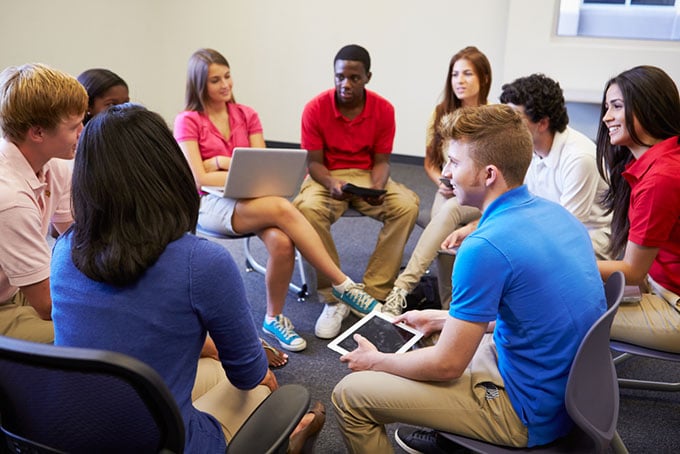Making the change to blended learning is a big move for any teacher. The good news is, there are plenty of educators and resources you can learn from before taking the first step.
Our #ClasscraftChat with @TriSciCurious (Jessica Anderson, 2016 Montana Teacher of the Year) provided some excellent insights and starting points.
What is blended learning?
Blended learning is the bridge between face-to-face instruction and online learning. It leverages technology to deliver instruction that students explore on their own, at their own pace.
For example, you may create different lesson options, such as researching a topic by watching certain YouTube videos or listening to an audio selection, as well as assignments that allow students to decide how to demonstrate their understanding, such as by either creating a video or writing a short story.
This innovative practice gives students more agency in how they want to approach lessons, putting the teacher as a guide on the side and making students leaders in their own learning.
Here are five best practices for blended learning in your classroom:
Build a strong class culture
To succeed with blended learning, you must have a positive relationships with your students. Students need to know they can approach the teacher for help, which requires good communication and a sense of trust.
Additionally, students need to self-manage and collaborate with one another, so positive peer interactions are an important facet as well. As you continue blending, aim to continue developing good relationships in your classroom as students become more immersed in this new style of pedagogy.
Keep calm and plan on
Blended learning requires a lot of work upfront (but requires less later on), so it’s easy to feel overwhelmed by having to create lessons beforehand for your students to explore.
A good tip is to create at least two modules ahead of time, then follow the student who is farthest ahead so you have a steady stream of content. In other words, create new modules as you need them.

Prepare for device failure
One risk of blended learning is device problems and Wi-Fi outage. Know that this is normal and happens even to the best teachers.
In these cases, you and your students will need a Plan B. Go with the flow—and switch back to pencil and paper if you need to.
Keep organized
Good organization will help you and your students better manage content and the paths they can take in their learning. A good learning management system (LMS) can help with this.
Platforms like Haiku Learning, Google Classroom, and Canvas (which has a library of teacher-made content) are all good resources.
Lean on your PLN for help
Starting with blended learning involves a lot of trial and error, but you don’t have to go it alone. Many other educators have blended and have created great content that you can use. Ask for help within your personalized learning networks (PLN) and communities (PLC). When the workload is shared, it’s easier to implement.
Many schools and districts have purchased resources and pre-made content that can help you get started easier. You can even find resources on sites like Discovery Ed and the CK-12 Foundation, as well as Better Lesson.
Photo credits: Monkey Business Images / Shutterstock.com
Personalized Learning


